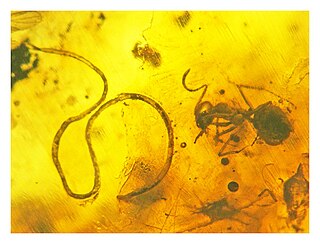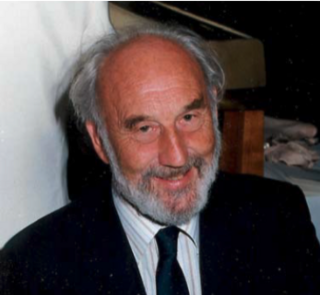
Verrucomicrobiota is a phylum of Gram-negative bacteria that contains only a few described species. The species identified have been isolated from fresh water, marine and soil environments and human faeces. A number of as-yet uncultivated species have been identified in association with eukaryotic hosts including extrusive explosive ectosymbionts of protists and endosymbionts of nematodes from genus Xiphinema, residing in their gametes.

Meloidogyne incognita, also known as the southern root-nematode or cotton root-knot nematode is a plant-parasitic roundworm in the family Heteroderidae. This nematode is one of the four most common species worldwide and has numerous hosts. It typically incites large, usually irregular galls on roots as a result of parasitism.

Rotylenchulus reniformis, the reniform nematode, is a species of parasitic nematode of plants with a worldwide distribution in the tropical and subtropical regions.
Pratylenchus scribneri is a plant pathogenic nematode. It is one of the major plant-parasitic nematodes infecting potatoes.
Heterodera trifolii is a plant pathogenic nematode.

The Kerry slug or Kerry spotted slug is a species of terrestrial, pulmonate, gastropod mollusc. It is a medium-to-large sized, air-breathing land slug in the family of roundback slugs, Arionidae.
Androdioecy is a reproductive system characterized by the coexistence of males and hermaphrodites. Androdioecy is rare in comparison with the other major reproductive systems: dioecy, gynodioecy and hermaphroditism. In animals, androdioecy has been considered a stepping stone in the transition from dioecy to hermaphroditism, and vice versa.

Diplogasterida was an order of nematodes. It was sometimes placed in a monotypic subclass Diplogasteria, but molecular phylogenetic evidence has shown it to be embedded in the family Rhabditidae. The confusion of having a hierarchical nesting of groups that were formerly mutually exclusive has led to a profusion of names. Although completely revised taxonomy of nematodes that builds on recent classification systems as well as recent phylogenetic evidence is still necessary, most contemporary taxonomic studies now treat all groups listed under "Diplogasterina" below as a single family, Diplogastridae.
The Rhabditidae are a family of nematodes which includes the model organism Caenorhabditis elegans.

Phasmarhabditis hermaphrodita is a facultative parasitic nematode that can kill slugs and snails. It belongs to the family Rhabditidae, the same family as Caenorhabditis elegans.
The Enoplia are a subclass of nematodes in the class Enoplea.
Palaeonema an extinct genus of nematodes from the Early Devonian. It contains only one species, Palaeonema phyticum, and is the only member of the family Palaeonematidae. P. phyticum is the oldest known fossil nematode, and was parasitic upon the Rhynie chert plant Agalophyton.
Alaninema ngata is a species of nematode.
Paratrichodorus is a genus of terrestrial root feeding (stubby-root) nematodes in the Trichodoridae family (trichorids), being one of five genera. They are economically important plant parasites and virus vectors. The females are didelphic, and are distributed worldwide.
Sudhausia is a genus of nematodes (roundworms) of the family Diplogastridae. They live in association with dung beetles and are primarily known from Africa. Species of Sudhausia show a suite of biological features that, together, are unusual for nematodes and animals in general: hermaphrodites, which are females in form, mature to produce offspring before they are adults and thus even capable of mating, and their eggs grow in size during development. Hermaphrodites are also always live-bearing, which is unusual for nematodes under non-stressful conditions. The genus is named in honor of Walter Sudhaus, a German nematologist.
Phasmarhabditis (Greek: Phasma = (φάσμα ; rhabditis = is a genus of bacterial-feeding nematodes which are facultative parasites whose primary hosts are terrestrial gastropods. The name comes from Greek: Phasma- (φάσμα ; rhabditis = rod-like (ῥάβδος. The genus is made up of 18 species including P. hermaphrodita, P. californica, P. neopapillosa, P. papillosa, P. apuliae, P. bohemica, P. bonaquaense, P. huizhouensis, P. nidrosiensis, P. valida and P. tawfiki.

Heydenius is a collective group genus of fossil mermithid nematodes from the Tertiary period that cannot be placed in extant genera.
Cretacimermis is a collective group genus of fossil mermithid nematodes from the Cretaceous that cannot be placed in extant genera.
Steinernema hermaphroditum is a species of nematodes in the Steinernematidae family.

Warwick Llewellyn Nicholas (1926–2010) was an Australian zoologist known as a pioneer in the field of nematology. He was a foundational member of the Australian Society for Parasitology (ASP) and in 1964, he organised the first ASP meeting. He became President of the Society in 1978, before being an elected Fellow from 1979.







